Franz Xaver Winterhalter (1805 – 1873)
Get a Winterhalter Certificate of Authenticity for your painting or a COA for your Boucher drawing or print.
For all your Winterhalter artworks you need a Certificate of Authenticity in order to sell, to insure or to donate for a tax deduction.
How to get a Winterhalter Certificate of Authenticity is easy. Just send us photos and dimensions and tell us what you know about the origin or history of your Winterhalter painting, drawing or print.
If you want to sell your Winterhalter painting, drawing or print use our selling services. We offer Winterhalter selling help, selling advice, private treaty sales and full brokerage.
We have been authenticating Winterhalter and issuing certificates of authenticity since 2002. We are recognized Winterhalter experts and Winterhalter certified appraisers. We issue COAs and appraisals for all Winterhalter artworks.
Our Winterhalter paintings, drawings and print authentications are accepted and respected worlwide.
Each COA is backed by in-depth research and analysis authentication reports.
The Winterhalter certificates of authenticity we issue are based on solid, reliable and fully referenced art investigations, authentication research, analytical work and forensic studies.
We are available to examine your Winterhalter painting, drawing or print anywhere in the world.
You will generally receive your certificates of authenticity and authentication report within two weeks. Some complicated cases with difficult to research Winterhalter paintings or drawings take longer.
Our clients include Winterhalter collectors, investors, tax authorities, insurance adjusters, appraisers, valuers, auctioneers, Federal agencies and many law firms.
We perform Franz Xaver Winterhalter art authentication, appraisal, certificates of authenticity (COA), analysis, research, scientific tests, full art authentications. We will help you sell your Franz Xaver Winterhalter or we will sell it for you.
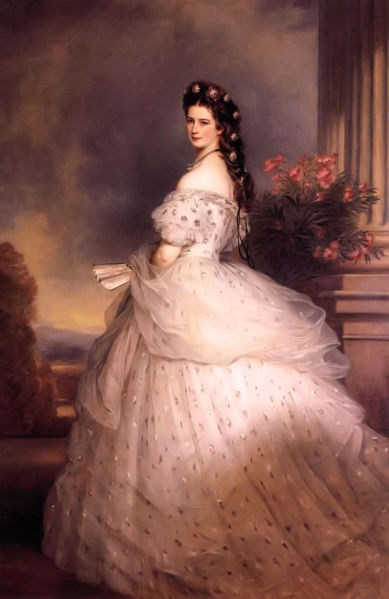
Franz Xaver Winterhalter was a German painter and lithographer, known for his portraits of royalty in the mid-nineteenth century. His name has become associated with fashionable court portraiture. Among Winterhalter’s most well known works are: Empress Eugénie Surrounded by her Ladies in Waiting (1855) and the portraits he made of Empress Elisabeth of Austria (1864).

Franz Xaver Winterhalter was born in the small village of Menzenschwand in the Black Forest, Grand-Duchy of Baden on April 20, 1805 . He was the sixth child of Fidel Winterhalter, a farmer and resin producer in the village, and his wife Eva Meyer, a member of a long established Menzenschwand family. His father was of peasant stock and was a powerful influence in his life. Of the eight brothers and sisters, only four survived infancy. Throughout his life, Winterhalter remained very close to his family, in particular to his brother Hermann Fidel Winterhalter (1808-1891), who was also a painter.
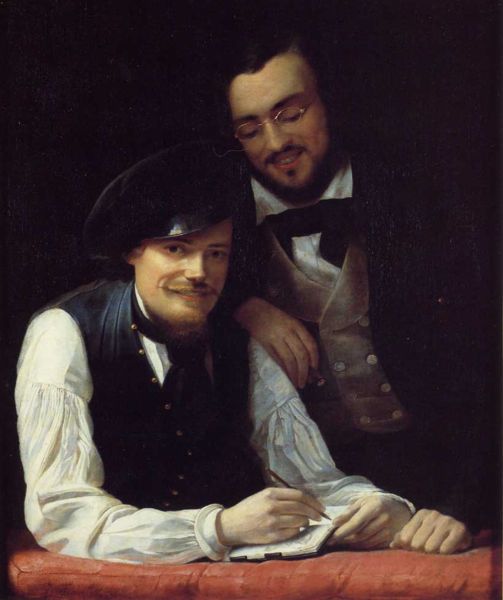
After attending school at a Benedictine monastery in Blasien, Winterhalter left Menzenschwand in 1818 at the age of thirteen to study drawing and engraving. He learned the occupation of graphic artist from 1818 to 1824 in Freiburg. Winterhalter had his first training with the popular painter Ludwig Schuler in Freiburg-im-Breisgau. At the age of eighteen with a scholarship, Winterhalter was sent to study painting at the Academy of Arts in Munich with Peter Cornelius, whose academic methods made him uncomfortable. Winterhalter found a more congenial mentor in the fashionable portraitist Joseph Stieler. During this time, he was also active as lithographer.
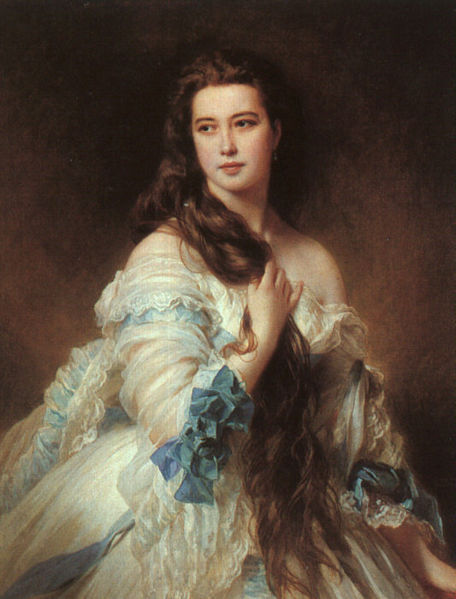
Winterhalter entered court circles when in 1828 he became drawing master to Sophie, margravine of Baden at Karlsruhe. His opportunity to establish himself beyond southern Germany came in 1832 when he was able to travel to Italy,1833-1834, with the support of Grand Duke Leopold of Baden. In Rome he composed romantic genre scenes in the manner of Louis-Leopold Robert and attached himself to the circle of the director of the French Academy, Horace Vernet. On his return to Karlsruhe, he painted the portraits of the Grand Duke Leopold of Baden and his wife and was appointed painter to the grand-ducal court.
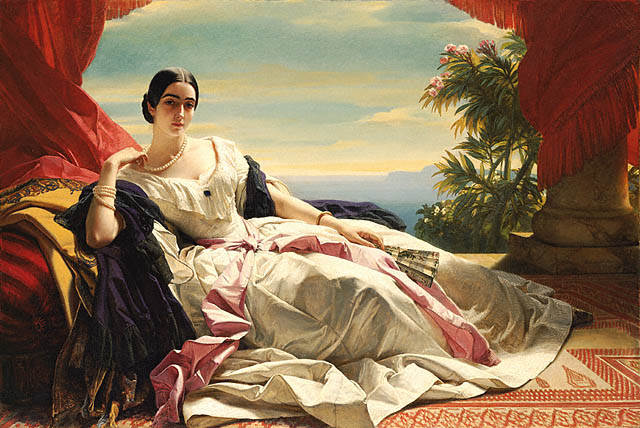
Nevertheless, Winterhalter left Baden to move to France where his Italian genre scene Il dolce Farniente attracted notice at the Salons of 1836. Il Decameron a year later was also praised; both paintings are academic compositions in the style of Raphael. In the salon of 1838 he exhibited a portrait of the Prince of Wagram with his young daughter. Winterhalter’s career as a portrait painter was soon secured when in the same year he painted Louise Marie of Orleans, Queen of the Belgians and her son. It was probably through this painting that Winterhalter came to the notice of Louis-Philippe of France, father of the Belgian Queen.
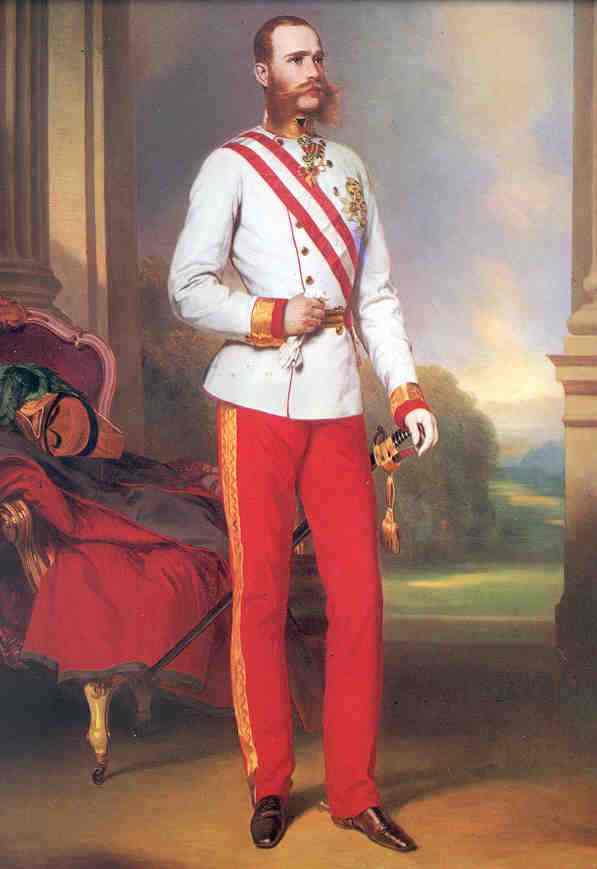
In Paris, Winterhalter quickly became fashionable. He was appointed court painter of Louis-Philippe, the king of France, who commissioned him to paint individual portraits of his large family. Winterhalter would execute more than thirty commissions for him. This success earned the painter the reputation of a specialist in dynastic and aristocratic portraiture, skilled in combining likeness with flattery and enlivening official pomp with modern fashion.
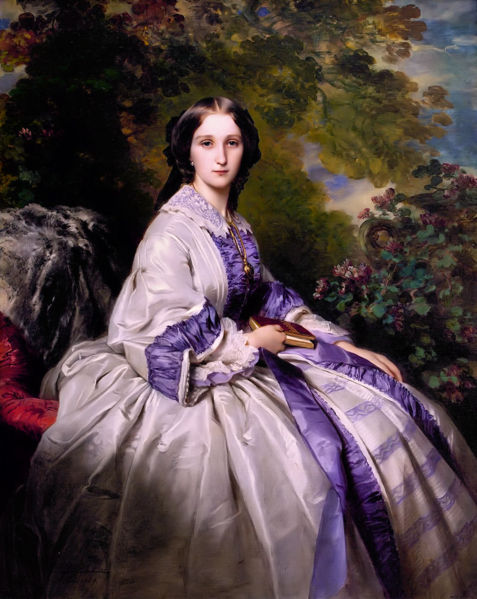
However, Winterhalter’s reputation in artistic circles suffered. The critics, who had praised his debut in the salon of 1836, dismiss him as a painter that could not be taken seriously. This attitude persisted trough out Winterhalter’s career, condemning his work to a category of his own in the hierarchy of painting. Winterhalter himself regarded his first royal commissions as temporary intermission before returning to subject painting and the field of academic respectability, but he was a victim of his own success and for the rest of his life he would work almost exclusively as a portrait painter. This was a field in which he was not only very successful but also made him rich. Winterhalter became an international celebrity enjoying Royal patronage.
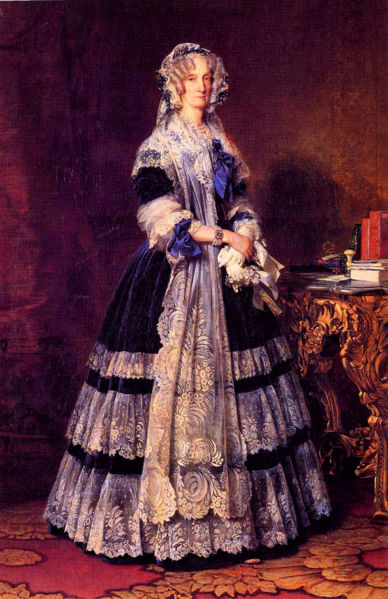
Among his many regal sitters was also Queen Victoria. Winterhalter first visited England in 1842, and returned several times to paint Victoria, Prince Albert of Saxe-Coburg and Gotha and their growing family; he did at least 120 works for them. Winterhalter also painted a few portraits of the aristocracy in England, mostly members of court circles. The fall of Louis-Philippe in 1848 did not affect the painter reputation. Winterhalter went to Switzerland and worked in commission in Belgium and England.
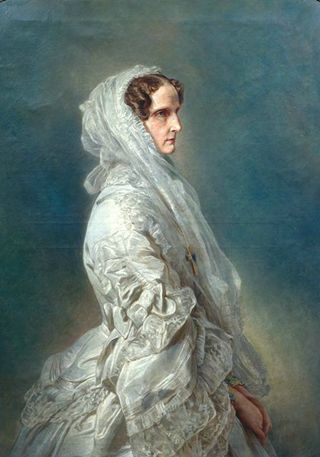
Persistence saw Winterhalter survived from the fall of a dynasty to the rise of another. Paris remained his home until a couple of years before his death. A halt in portrait commissions in France allowed Winterhalter to return to subject painting with a joyous celebration of female beauty, inspired by a Spanish legend. In this same year he made a marriage proposal but was rejected. Winterhalter remained a bachelor committed to his work.
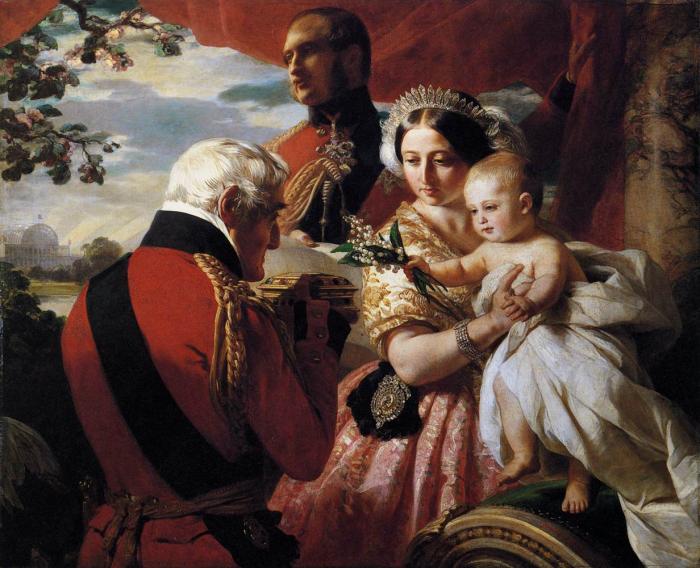
After the accession of Napoleon III, Winterhalter’s popularity grew. From then on, under the second Empire, Winterhalter became the chief portraitist of the imperial family and court of France. The beautiful French Empress Eugénie became a favorite sitter and she treated him generously. In 1856 Winterhalter painted his masterpiece: Empress Eugénie surrounded by her ladies in waiting. He set the French Empress in a pastoral setting gathering flowers in a harmonious circle with her ladies in waiting. The painting was acclaimed and exhibit in the universal exposition in 1853. This painting remains Winterhalter most famous work.
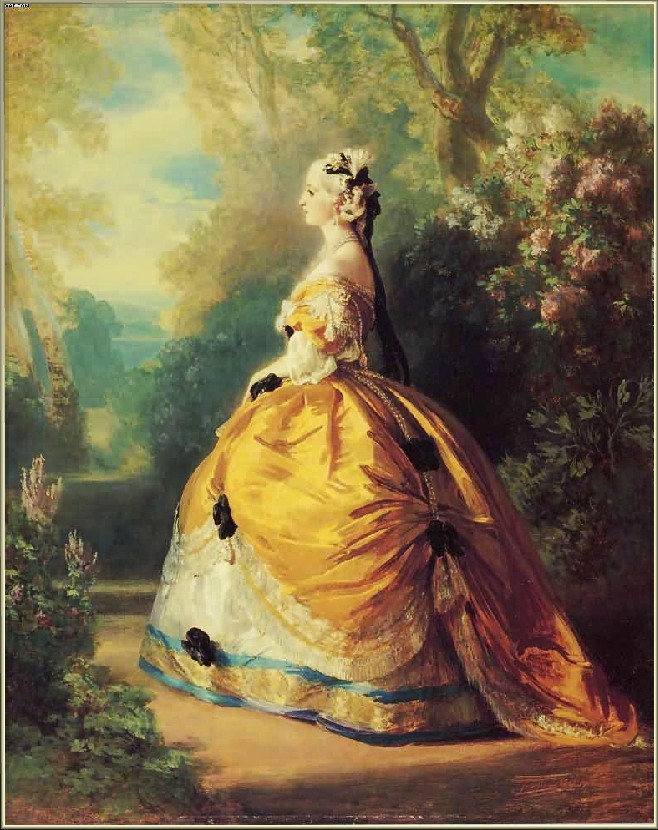
In 1852, Winterhalter went to Spain to paint Queen Isabella II and worked for the Portuguese royal family. Russian aristocratic visitors to Paris also liked to have their portraits executed by the famous master. As the “Painter of Princes”, Winterhalter was thereafter in constant demand by the courts of Britain (from 1841), Spain, Belgium, Russia, Mexico, the German courts, and France. In the following years Winterhalter was in high demand, and in 1856 he went to Poland to paint for the aristocracy there and in 1857 in Upper Bavaria he painted the tsarina Maria Alexandrovna. Over the course of the next years he painted many Russian commissions through the 1860s.
During the Second Mexican Empire in the 1860’s, headed by Maximilian I of Mexico, Winterhalter was commissioned to paint portraits of the Imperial couple. The Empress consort of Mexico, Charlotte of Belgium was the daughter of Louise-Marie of France, Queen of the Belgians, who had used Winterhalter at the beginning of his career in France. Some of Winterhalter’s paintings of the Mexican monarchs still remain in their Mexico City palace, now the National Museum of Anthropology. To deal with the pressure of portrait commissions, many of them calling for multiple replicas, Winterhalter made extensive use of assistants. No portrait painter ever enjoyed such an extraordinary royal patronage as Winterhalter, only Rubens and Van Dyck worked as he did in an international network.
Winterhalter sought respite from the pressures of his work with holidays abroad in Italy, Switzerland and above all in Germany. In spite of his many years living in France, he remained deeply attached to his native country. For all his success and popularity, Winterhalter continued to live simply and abstemiously. In 1859 he bought a villa in Baden-Baden, his favorite vacation spot. In 1864 Winterhalter made his last visit to England. In the autumn of that year he traveled to Vienna to execute the portraits of Emperor Franz Joseph and Empress Elisabeth that remain among his most well-known works. As he grew older, Winterhalter’s links with France weakened while his interest in Germany grew. He was taken a cure in Switzerland at the outbreak of the Franco-Prussian War that ended the second Empire in September of 1870. After the war, the painter did not return to France, going instead to Baden. Without traumatism, he decided to retire in Germany. He was officially still accredited at the court of Baden and he settled in Karlsruhe. During the last two years of his life Winterhalter painted very little. During a visit to Frankfurt am Main in the summer of 1873 he contracted typhus and died on July 8, 1873. He was sixty-eight years old.
Winterhalter came into his own as a portrait painter during the second Empire and he painted his best work during the last two decades of his life. He matched his style to the luxury and relaxed atmosphere of the age, its hedonism and gaiety. His female sitters of the 60s and 50s inhabit a different physiological climate from those he painted earlier, they are not reticence and reserved. His male sitters inspired few original or memorable compositions.
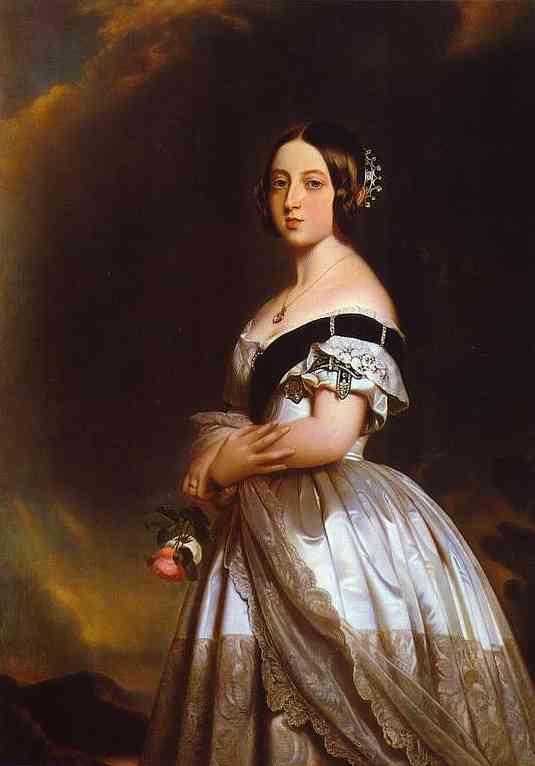
Winterhalter never received high praise for his work from serious critics, being constantly accused of superficiality and affectation in pursuit of popularity. However, he was highly appreciated by his aristocratic patrons. The royal families of England, France, Spain, Russia, Portugal, Mexico and Belgium all commissioned Winterhalter to paint portraits. His monumental canvases established a substantial popular reputation, and lithographic copies of the portraits helped to spread his fame.
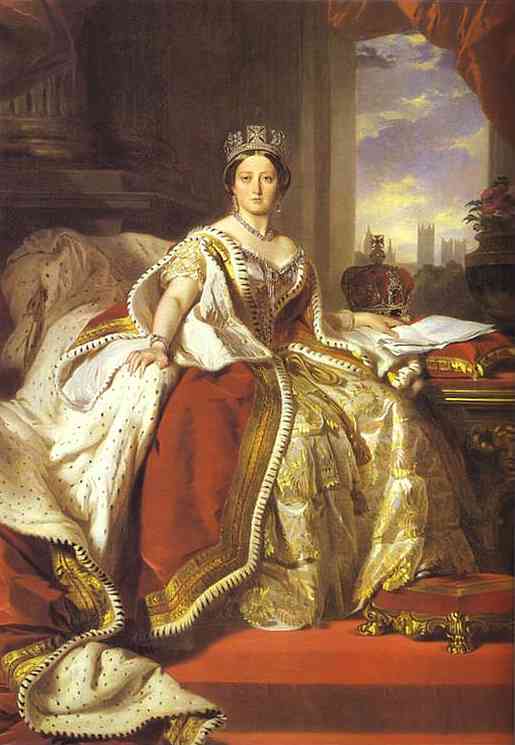
Winterhalter’s portraits were prized for their subtle intimacy; the nature of his appeal is not difficult to explain. He created the image his sitters wished or needed to project to their subjects. He was not only skilled at posing his sitters to create almost theatrical compositions, but also was a virtuoso in the art of conveying the texture of fabrics, furs and jewelry, to which he paid no less attention than to the face. Winterhalter painted very rapidly and very fluently, designing most of his compositions directly in the canvas. His portraits are elegant, refined life-like and pleasantly idealized.
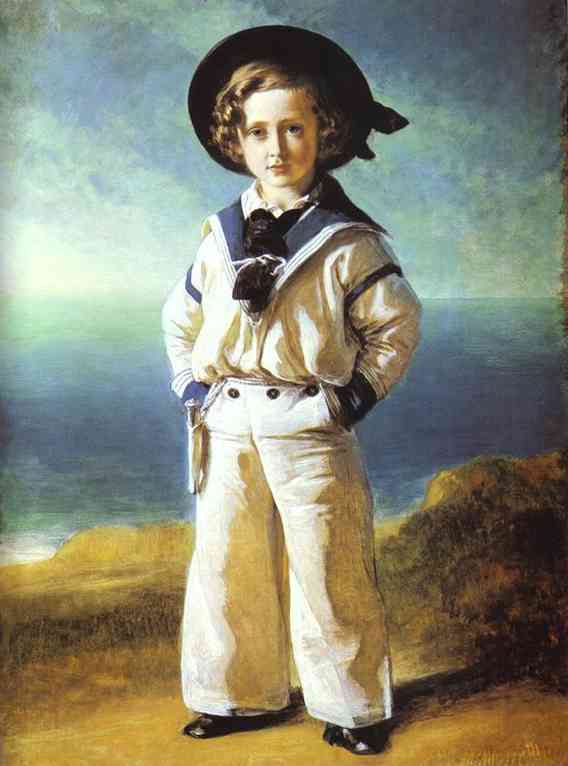
Winterhalter’s style was suave, cosmopolitan and plausible. As an artist he remained a difficult figure to place, there are few painters with whom to compare him and he does not fit into any school. His early affinities were neoclassical but his style can be described as Neo-Rococo. After his death, his painting fell out of favor, being considered romantic, glossy, and superficial. Little was known about him personally and his art was not taken seriuosly until recently. However, a major exhibition of his work at the National Portrait Gallery in London and the Petit Palais in Paris in 1987 brought him into the limelight again. His paintings are exhibited today in leading European and American museums.

Still wondering about a German painting in your family collection? Contact us…it could be by Franz Xaver Winterhalter.
Reviews
1,217 global ratings
5 Star
4 Star
3 Star
2 Star
1 Star
Your evaluation is very important to us. Thank you.
